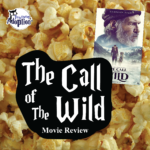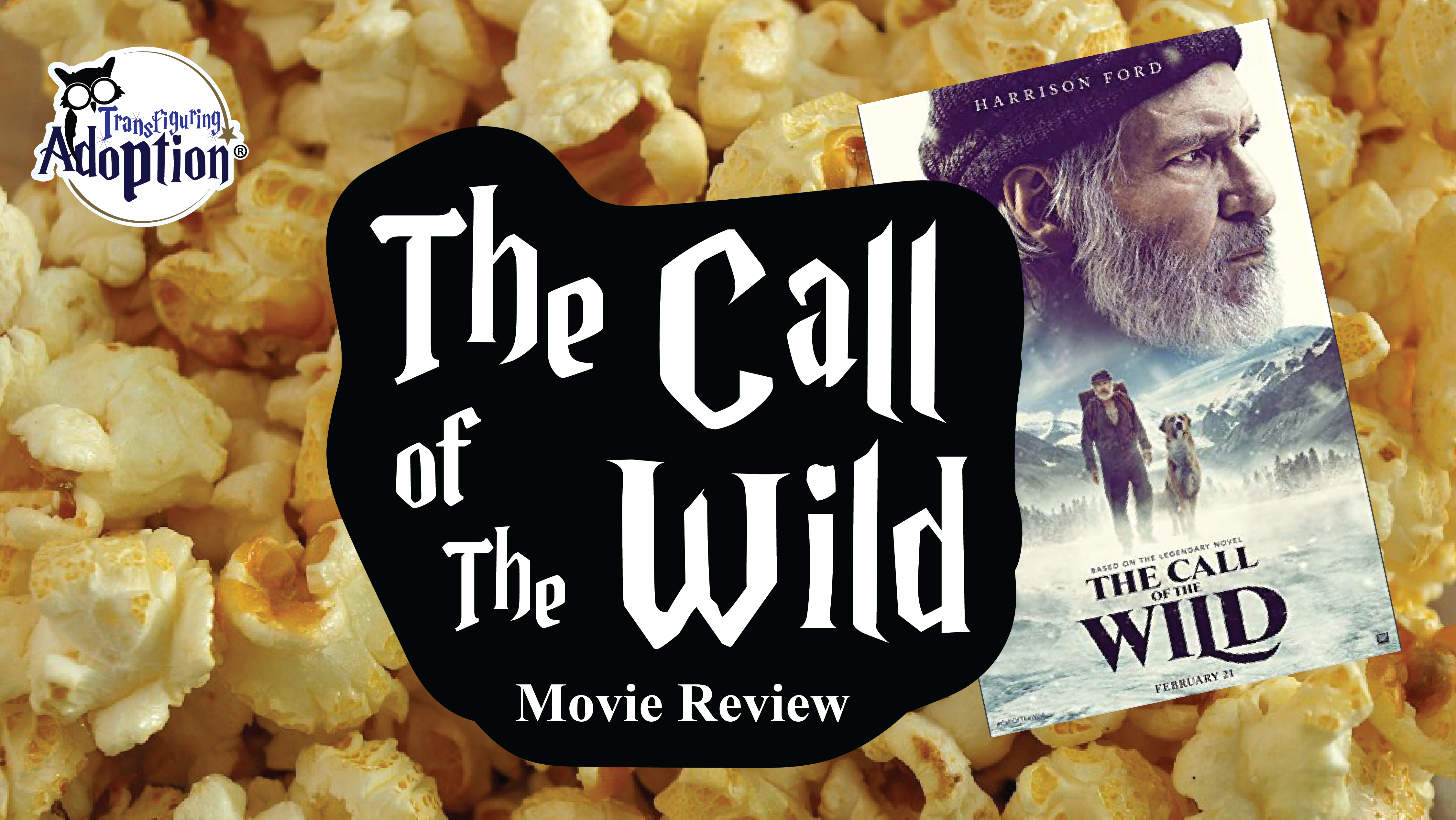
Call of the Wild (2019)
Discussion Packet
Call of the Wild (2020) – Discussion Guide
Discussion Guide
- Buck is described by the narrator at one point as being ‘beaten but not broken’. What do you think this means? What kinds of personality traits or good experiences has Buck had in his life that help him get through the difficult times?CAREGIVER NOTE: While this question focuses on Buck and his resilience it can be a way for children to discuss their own trauma and resilience as well. In trauma-informed care training they call these ‘protective factors’- the positive people, personality traits, and experiences we carry with us. The more of these we have, the better able we are to deal with the trauma we experience. Help children identify these protective factors in Buck- his master’s family he lived with at the beginning of the movie loved him unconditionally, he was determined/stubborn, curious, kind to others, he had positive experiences being part of a team when he worked with Francois, etc. Then if they are able, help them to identify their own protective factors, or maybe things they have in common with Buck.
- When Buck joins the sled team with Perrault and Francois he must learn to work with the other dogs, including Spitz, the lead. Was Spitz a good leader? Why or why not?
CAREGIVER NOTE: While Spitz was the official boss of the pack and maybe had the most sled-dog experience he was not a good leader. The others followed him out of fear, rather than love. He was selfish, always taking the biggest helping of food or best place to sleep. And he was quick to use his physical strength to put others in their place. Essentially, he was a bully. And while he was able to stay on top for a while this way, ultimately it didn’t last. This can be a time to talk to youth about bullying and the difference between ‘being the boss’ and ‘being a leader’ - Ultimately Buck fights Spitz and takes over as head of the pack. What qualities did Buck have that make him a good leader? Was he right to take over?CAREGIVER NOTE: Unlike Spitz, Buck often shares what he has with the other dogs or helps them to succeed. He inspires, rather than instilling fear. This can be a jumping off point to talk to kids about people they know who embody these qualities such as teachers, parents, etc. as well as how they themselves can strive to be good leaders.
- Francois tells Buck that Perrault is never on time with his mail delivery but that he ‘drives every day like he believes he might make it’. What does this tell us about what kind of person Perrault is?
CAREGIVER NOTE: Perrault really embodies that characteristic of determination. No matter how many times he fails he keeps trying. He was insistent that he could get Buck to be a sled dog and kept working until Buck was able to pull the sled. And even when he’s behind schedule he gives it his all to try and get back on track. This can be a great way to start a conversation about the importance of sticking with things and continuing to try even when you might fail at first. And in believing in yourself. A lot of times children in care have been told over and over that they weren’t good at something or couldn’t do something or weren’t smart enough. And so talking about embodying a spirit of doing your best and believing you can accomplish things, even when they feel insurmountable is a great skill to build. - Throughout the movie Buck sees a large black wolf that only he can see. What do you think this wolf represents? How does it help Buck?
CAREGIVER NOTE: While it isn’t necessarily clear at first, we learn that the Black Wolf is Buck’s spirit guide, his intuition or ‘wild side’ that helps him make decisions and know what to do when he is uncertain. This can be a great time to talk about ‘gut feelings’ and how to know when to listen to them and what to do if you’re asked to do something but it feels wrong, such as talking to a trusted adult like a caregiver, teacher, or counselor. - John Thornton has lost his son and is struggling with dealing with this. How does Buck help him find healthier ways to deal with his loss? Have you ever experienced a loss like John? What did you do to help feel better?
CAREGIVER NOTE: We find out that John Thornton’s son died and he is struggling with his feelings of grief and deals with his sadness by drinking and isolating himself. Through his friendship with Buck he is able to find healthier ways to deal such as going on the trip he’d always planned to take with his son in his honor. John says that he didn’t want to be around anyone at first, but realized that he liked having Buck around and that it was easier to cope with his feelings when he wasn’t alone. If children have experienced a recent loss they might not know how to process it. Ask them if there’s anything you can do to ‘be like Buck’ and help them feel better again. You can also talk about how there’s sometimes nothing you can do, but just having someone else around helps and that you hope that you can be like Buck and provide that support until they’re ready to talk about their grief and that you’re happy just being there with them. - ACTIVITY: Letter Writing. Perrault and Francois work for the postal service delivering mail across Alaska because in that time, this was the only way to get messages to other areas- there weren’t yet phones or the internet. Have Children write a letter (or draw a picture/card for younger kids) that can be sent to a friend or family member. Maybe someone who lives further away but it can be fun to get mail even from someone who lives down the street! Go to the post office as a family and talk about how the mail system works now and compare it to how things were done in Buck’s time.CAREGIVER NOTE: In today’s world so much of our communication is instant: cell phone and e-mails. It can be a fun family bonding activity to slow down and write letters together. Children in foster or adoptive families have often had to leave others behind at some point- whether that’s biological family members, friends, or even foster or adoptive family members that live further away. As appropriate to their situation, help them identify someone they are able to write a letter to. You could even write letters to each other and mail them! Getting something in the mail is such a magical part of childhood and it could be fun to learn about how the postal service works and watch as the letter comes back to the house and how long it takes to get back.
- ACTIVITY: Panning for Gold. The movie takes place during the Yukon Gold Rush and Buck and John even find gold when they get to their cabin home. As a fun bonding activity make your own gold rush!CAREGIVER NOTE: In addition to bonding and just being *fun* This is a great sensory activity! Have kids collect small rocks of varying sizes and shapes and paint them gold. Then fill a large container with sand and these gold rocks, making sure it’s well mixed together so that the gold is ‘hidden’. Children can then use sifters to ‘pan for gold’ and try to find all of the rocks! To make this more challenging for older kids you can use a timer and see who can find the most gold in a minute, or who can find all of the gold nuggets the fastest. You can also have kids work in teams to tie back into the theme of how it’s easier to accomplish more when working as a team than on your own.
- The first time Buck meets the bear in the woods, the bear scares him away. However, at the end of the movie the bear actually runs away from Buck. What was different the second time? Have you ever had a time when you struggled with something but were able to accomplish it because you had help?CAREGIVER NOTE: The first time Buck meets the bear, he is alone. The second time he has his entire wolf pack with him. Talking about this experience, and similar experiences children might have had, is an opportunity to discuss the ways in which being a part of a team or family can make them stronger and how families can help each other solve problems that are too hard to handle on their own. Children who’ve been through foster care or adoption often have the tendency to be more independent and to trust others less. They may feel like if they let people in, it increases their chances of being hurt again. So it’s important to have conversations about the ways in which being part of a group or family makes us stronger.
- Throughout the movie Buck lives in many different places, with many different masters and situations. Where do you think Buck was the happiest? Why?CAREGIVER NOTE: With the exception of his time spent with Hal who was abusive, all of Buck’s homes had some good qualities. In his first home Buck was loved and had all the material things he could ever want, even to the point of being spoiled. With Perrault and Francois he got to be part of a team with fellow dogs for the first time and experience new things such as snow. With John, Buck was protected and given a safe place to heal and to rest and the freedom to discover himself. And with the wolf pack he was able to be with his own kind with no master and start a family of his own. By talking about which of these situations they think was the best for Buck it can give you insight as to what they value in their own lives/home.
[Donate to this Project]
About the Author: Jenn Ehlers
Jenn is a central Virginia native who received her BA in Psychology from the University of Virginia in 2012. Since then she has worked for a local mental health agency and the Department of Social Services in various capacities and has been involved in her community’s efforts to create a Trauma Informed Network. Currently Jenn works in vocational rehab and mentors youth in foster care. When she isn’t working, Jenn enjoys writing stories, anything and everything Harry Potter, and spending time with her niece and nephew.
**Transfiguring Adoption is a nonprofit organization seeking to nurture growth in foster and adoptive families by giving a HOOT about their families. Transfiguring Adoption does not intend for its reviewers nor its review to be professional, medical or legal advice. These reviews and discussion guides are intended to help parents to better be able to connect and understand their children who come from traumatic backgrounds.
